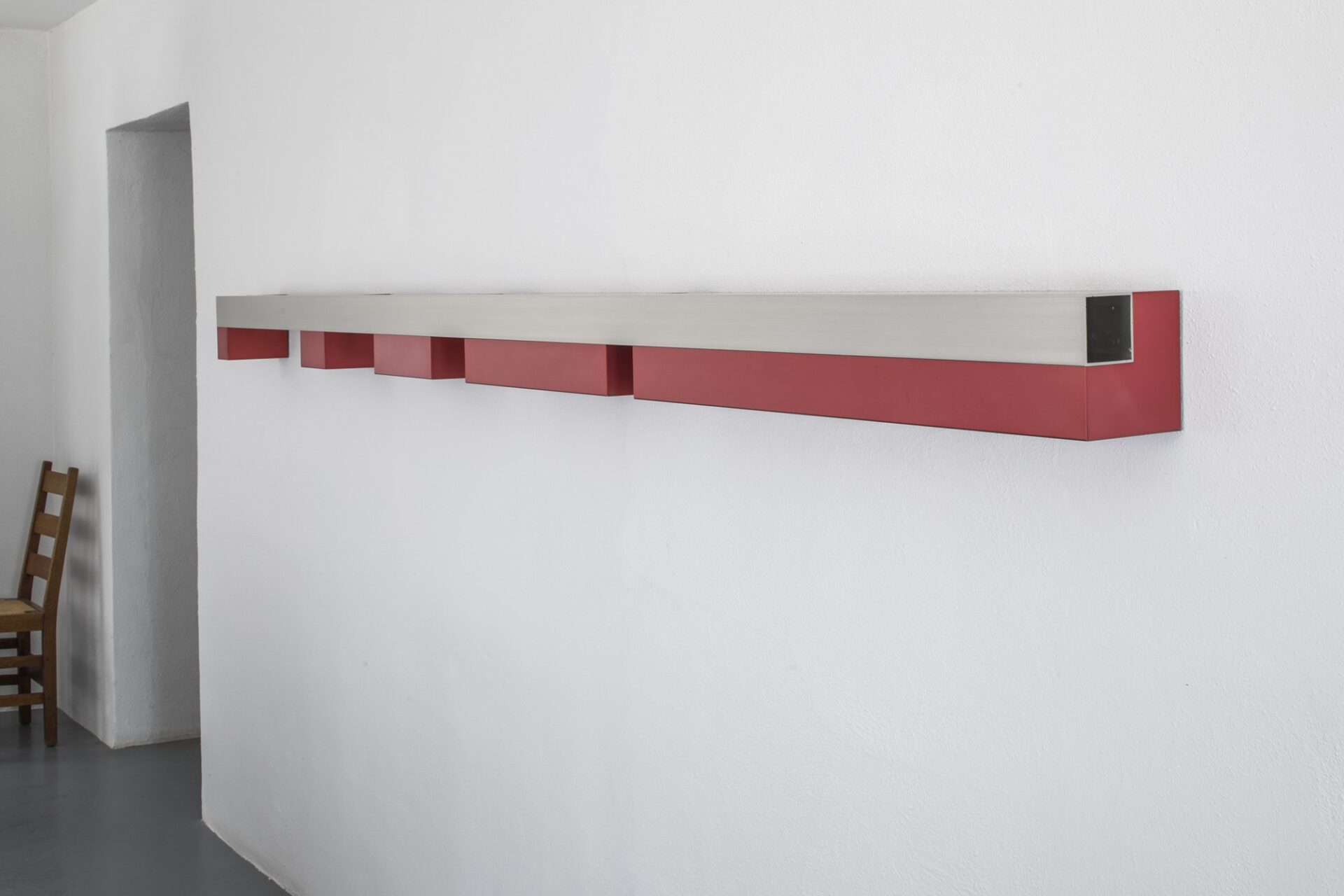Donald Judd first made works like this one, referred to by his studio as “progressions,” in the 1960s. To determine the proportional relationships in this work, Judd used mathematical sequences, which allowed “a certain variation without getting involved in composition.”1 Of these works, Roberta Smith wrote, “A system unifies the piece, but it is the perception of that unity, not the system which is prominent.”2
As Judd said in a 1968 interview for the New York Times, “My stuff is just a little progression, like adding up the grocery bill. . . . There’s no mathematical mystique to it. If it seems a reaction to European art, it’s because it doesn’t involve incredible assumptions about everything. It’s not a general statement. I can’t even begin to think about reflecting on ‘universal order,’ as the Europeans did.”3
This work was exhibited once, in Donald Judd: New Work at Adair Margo Gallery, El Paso, Texas (October 9–November 20, 1987), before being installed by Judd in the main house at Las Casas.

